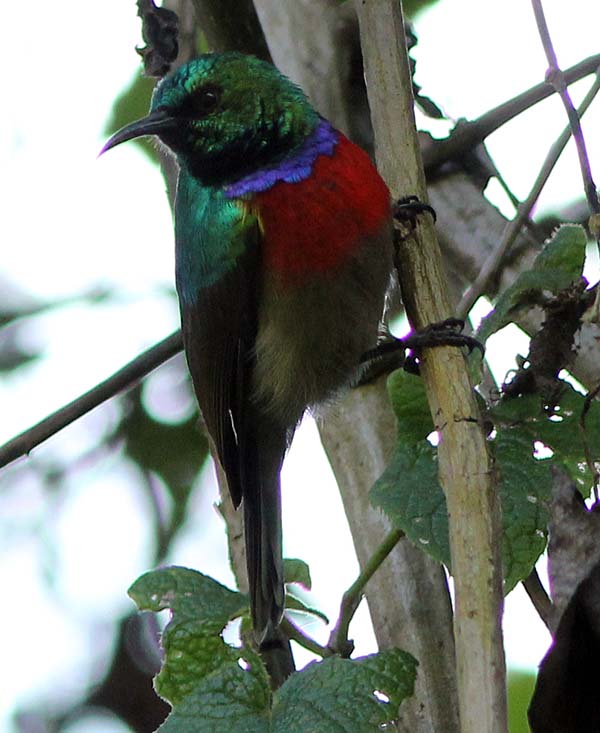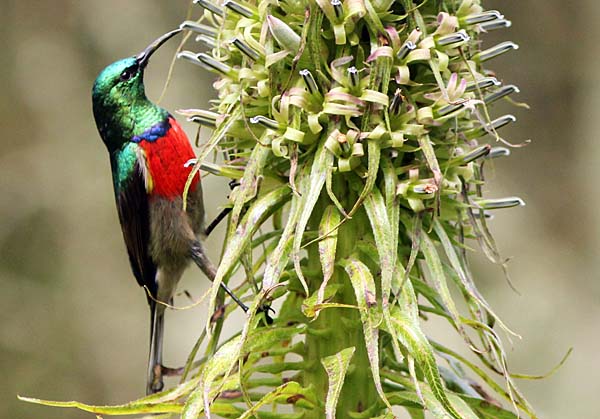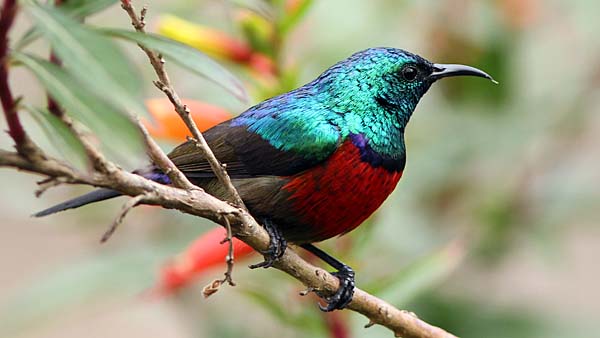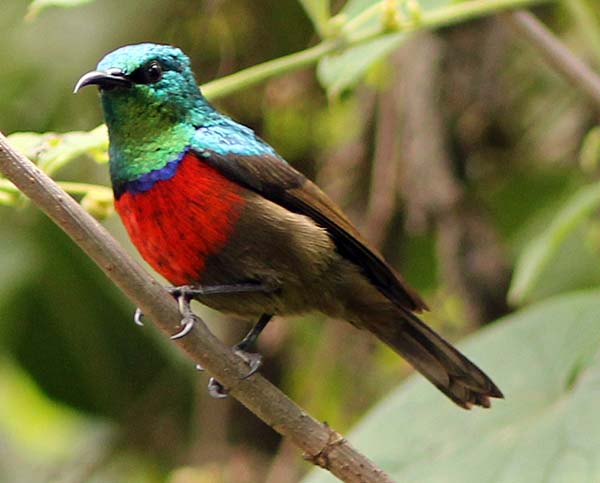Rwanda Sunbird Confusion
It’s come to my attention that the sunbird photo I put in my Gorillas in the Sunshine post was actually a Stuhlmann’s Sunbird after all.
Since I don’t have time to work on this problem myself at the moment, I thought it would make a fun blog post to simply present all the photos I can dredge up from Rwanda and solicit opinions from you all. Here they are.
These five are from Volcanoes National Park.




These two birds are from Nyungwe Forest National Park. The first two photos and the blog’s title photo are of the same individual.


So what do you all think? I look forward to seeing your comments.

Well, your options are Northern Double-collared (C. preussi), Olive-bellied (C. chloropygia) and Stuhlmann’s (two races, graueri in the Volcanos NP, schubotzi in the Nyungwe). [I assume you were using Stevenson and Fanshaw in the field – as you’ll have spotted the maps away from Kenya are based mainly on author prejudice…] From the size all these pics appear on my screen they’re all HUGE – amazingly close pics of horrible things to photograph! Given that the best ID feature is usually size, that’s going to make it tricky… I don’t think any of these are olive-bellied – they’ve all got obvious collars. Are any Northern? Hmmm… From the pics they all seen rather long billed or the angle is impossible to judge, which suggests not. The relative pale-ness of the bellies in the first set looks good for graueri – as they should be. So they all look like Stuhlmann’s to me, but both Rwanda races – though I’m not certain at all!
Colin – thanks so much for taking the time to comment. So does the color and width of the purple/blue band on the breast mean much? Or is it too hard to judge given the fugitive nature of iridescence?
Your pictures are so good it is possible to see different widths here (top birds are much wider than bottom ones). I think the tone of colour itself is far too dependant on lighting to ever be useful, but width is certainly used as a signal in these species (that’s partly how I ruled out Olive-bellied for any of them). Unfortunately I don’t think we know well enough what the variation is with angle of head or between individuals/populations for it to be too helpful just yet – if more people get more photos like yours then we might stand a chance! Could you share them on the ABC bird gallery or some other central repository? And if you’ve got any females that were with them, add them too – it’s so hard to find pictures of females. As is often the case calls and song can be quite useful, but I don’t suppose you’ve got any notes on that?
Safari Ecology Blog
What a nightmare! For what its worth, I thought the beak, especially in the first two photo’s looked too short for Stuhlmann’s but I’ve only been to Africa once in 1995 and am using van Perlo’s Illustrated Checklist, which has some rather dodgy illustrations, as a guide. If its any consolation, we have no such nightmare families in Belgium waiting for you!
Your photos and article is truly beautiful. I live in South Africa and have seen so many Sunbirds especially in the Cape where they feed on the beautiful Protea flowers. I am always so busy admiring their beauty I forget to try and identify them.
I have bred parrots and cockatoos for the past twenty years now and anything with feathers always attracts my attention. Some of your readers may want to read some fascinating bird stories on https://www.growgoldonline.com/birdtalk
Your photos and article is truly beautiful. I live in South Africa and have seen so many Sunbirds especially in the Cape where they feed on the beautiful Protea flowers. I am always so busy admiring their beauty I forget to try and identify them.
I have bred parrots and cockatoos for the past twenty years now and anything with feathers always attracts my attention. Some of your readers may want to read some fascinating bird stories on https://www.growgoldonline.com/birdtalk
Your photos and article is truly beautiful. I live in South Africa and have seen so many Sunbirds especially in the Cape where they feed on the beautiful Protea flowers. I am always so busy admiring their beauty I forget to try and identify them.
I have bred parrots and cockatoos for the past twenty years now and anything with feathers always attracts my attention. Some of your readers may want to read some fascinating bird stories on https://www.growgoldonline.com/birdtalk